As with all instrument, scales are an essential part of developing into a complete musician. Here are notation and fingering charts for all flute major scales. Underneath each one is an audio clip so you can see how it sounds.
C Major Scale
- C D E F G A B C
No sharps of flats in this major flute scale. Here are the top 3 challenges when playing C Major:
- Crossing the Break: The transition from the middle to the high register, especially around B to C, requires quick and precise fingering adjustments to maintain smoothness in the scale.
- Embouchure Adjustments for Octave Shifts: Achieving the higher octave demands subtle embouchure changes to control pitch and tone, challenging the player’s ability to maintain consistent sound quality across registers.
- Air Support and Control: Sustaining clear, in-tune notes in the upper octave necessitates refined breath control and focused air support, challenging the player’s breath management skills.
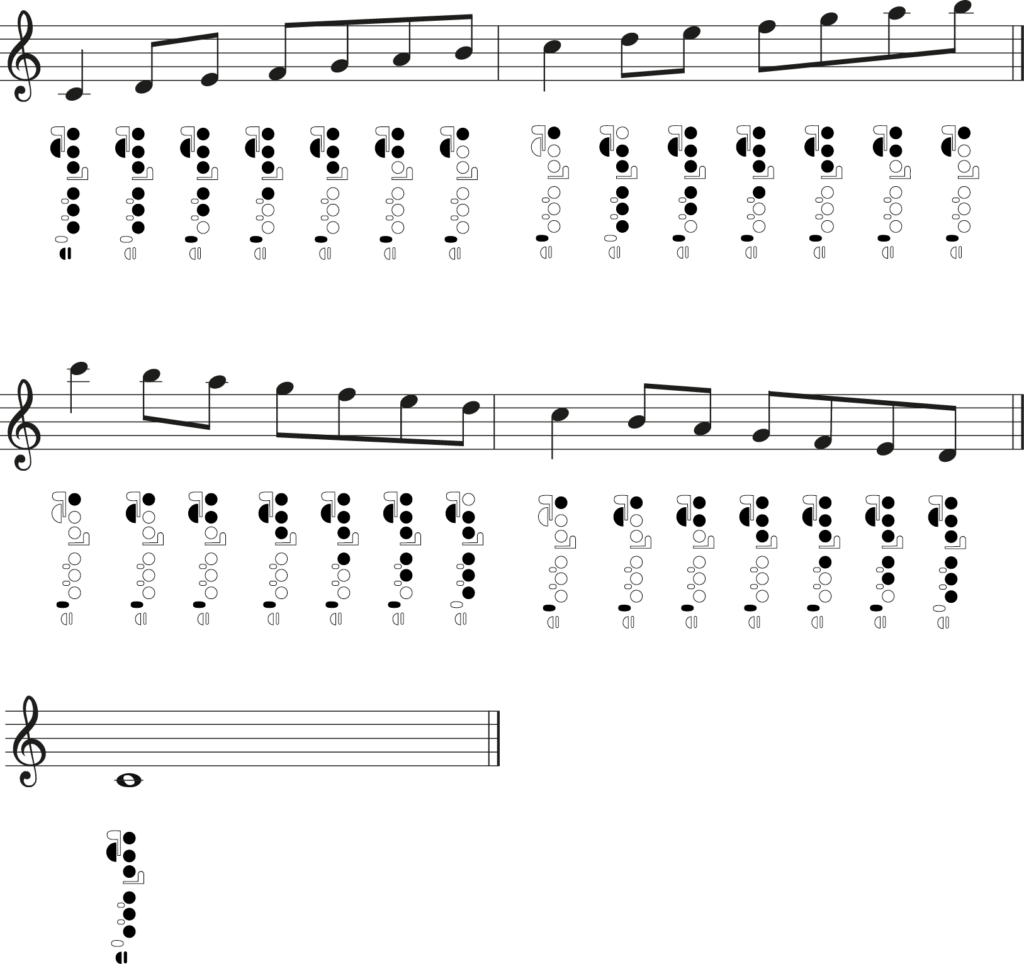
G major scale
- G A B C D E F# G
One sharp (F#) to watch out for. Here are the top 3 challenges when playing G Major:
- Crossing the Octave Break: Transitioning from the first octave G to the second octave A involves a significant adjustment in fingerings and air pressure, requiring precise coordination.
- High G Execution: Reaching the high G at the end of the scale demands accurate fingering, increased air support, and tight embouchure control to maintain tone quality and intonation.
- Maintaining Even Tone: Ensuring a consistent tone across the scale, especially when moving through the register break and into the higher octave, challenges the player’s embouchure flexibility and air stream control.
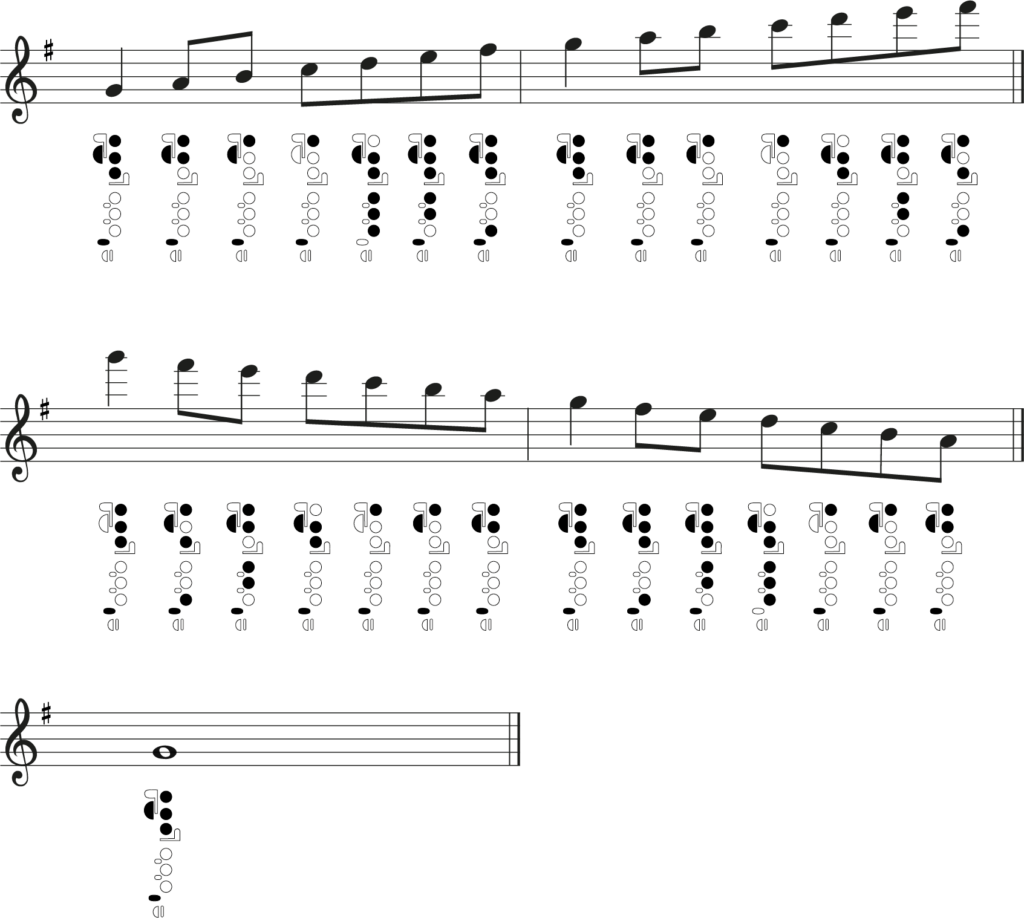
D major scale
- D E F# G A B C# D
Two sharp (F#, C#) to watch out for. Here are the top 3 challenges when playing D Major:
- F# to G Transition: Moving from F# to G in the upper octave requires a quick and precise change in fingerings, challenging coordination and finger agility.
- High D Execution: Achieving the high D at the scale’s peak involves complex fingering and significant embouchure adjustment to maintain pitch accuracy and tone quality.
- Consistent Intonation: Maintaining consistent intonation through the scale, especially in the transition between octaves, challenges the player’s air support and embouchure control.
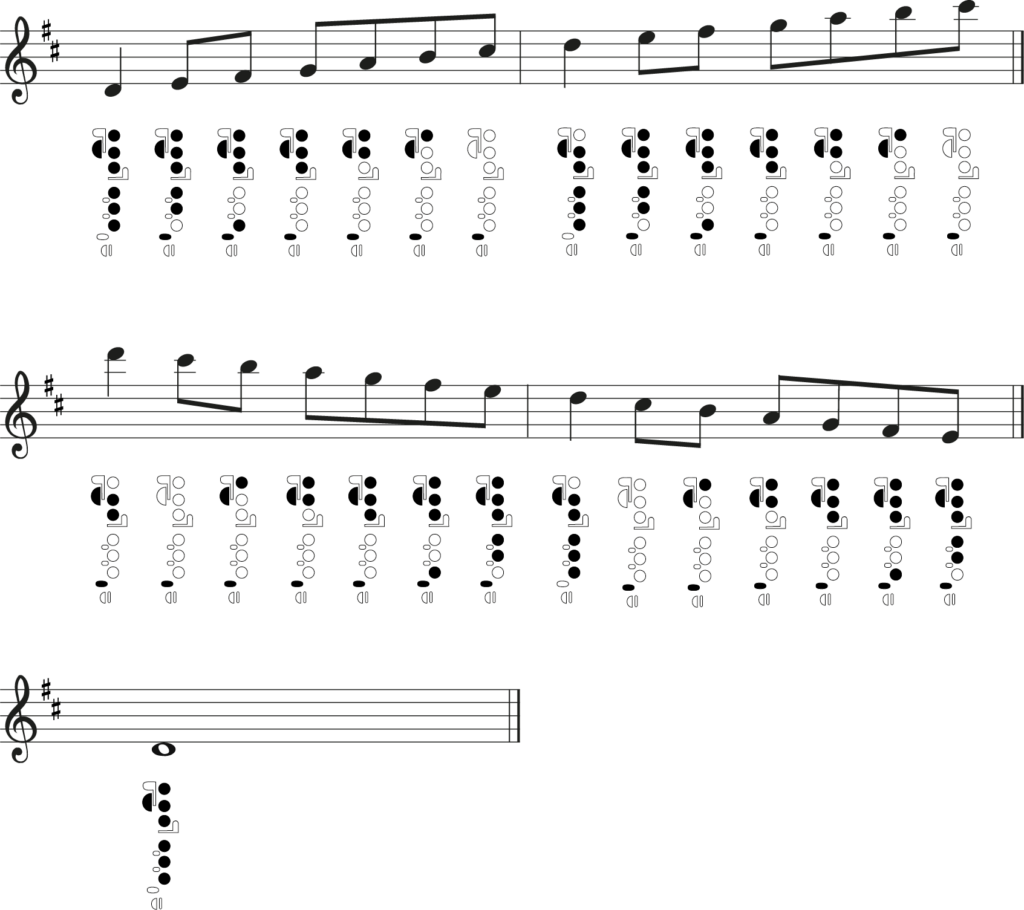
A major scale
- A B C# D E F# G# A
Three sharp (F#, C#, G#) to contend with. Here are the top 3 challenges when playing A Major:
- Thumb Key Transition: The transition from G# to A in both octaves involves a change in thumb key usage, demanding dexterity and quick finger movement to ensure smoothness.
- High E to F# Shift: Moving from high E to F# requires precise fingering adjustments and embouchure control to avoid squeaks and maintain pitch accuracy.
- Consistent Intonation Across Registers: Achieving consistent intonation while ascending and descending through the scale, especially across the break and in the upper octave, challenges the player’s breath support and embouchure stability.
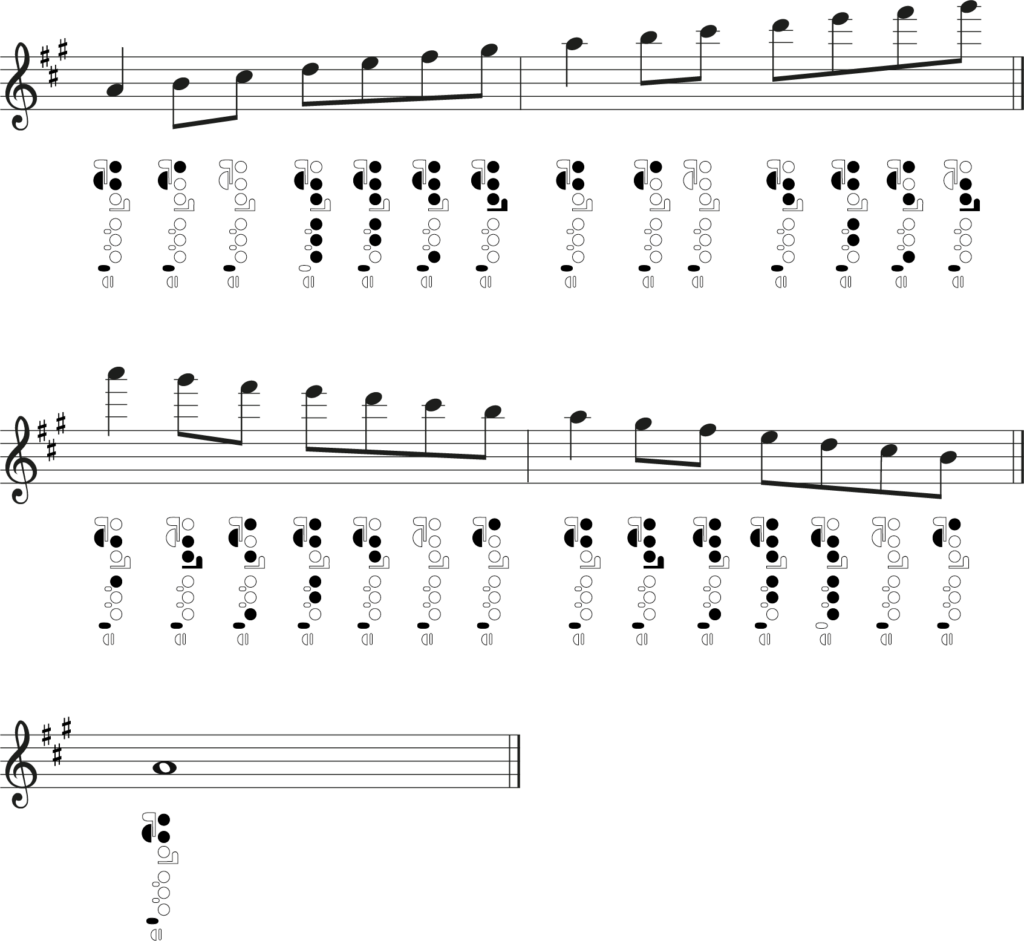
E major Scale
- E F# G# A B C# D# E
There are four sharps to watch out for in E major. Here are the top 3 challenges when playing this scale:
- F# to G# Transition: The shift from F# to G# requires careful fingering coordination, especially in the upper octave, to maintain a smooth and connected scale.
- High B to C# Leap: Achieving the high B to C# leap involves precise finger movements and embouchure adjustment to ensure pitch accuracy and tonal clarity.
- Maintaining Even Tone and Intonation: Balancing tone and intonation across the scale, particularly when navigating through the sharp notes unique to E Major, challenges the player’s control over air flow and embouchure adjustments.
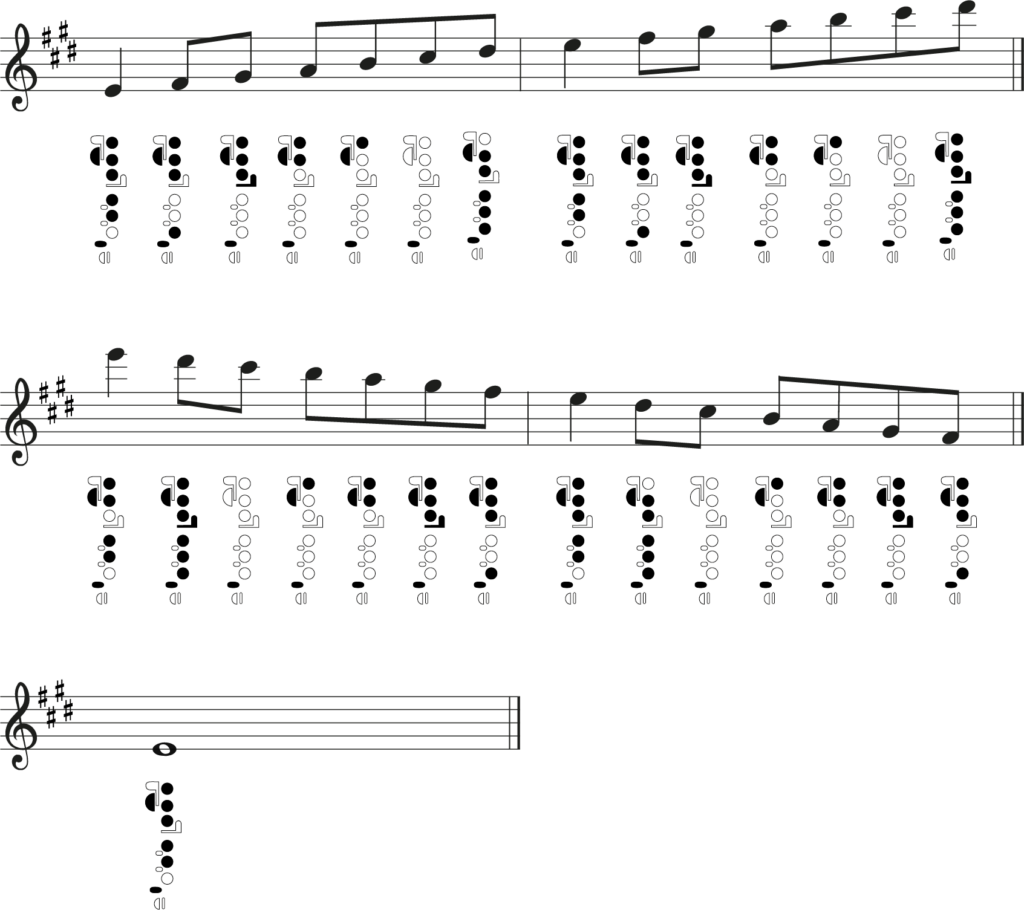
B major Scale
- B C# D# E F# G# A# B
Five sharps to watch out for! Here are the top 3 challenges when playing B Major:
- C# to D# Transition: The shift from C# to D# across both octaves requires precise finger coordination and quick adjustment, challenging the player’s ability to maintain a smooth transition.
- High F# Execution: Reaching the high F# at the scale’s peak demands accurate fingering, increased air support, and refined embouchure control to ensure pitch stability and tonal quality.
- Consistency in Intonation and Tone: Ensuring consistent intonation and tone across the scale, especially given the number of sharps and the register changes, tests the player’s embouchure flexibility and breath management skills.
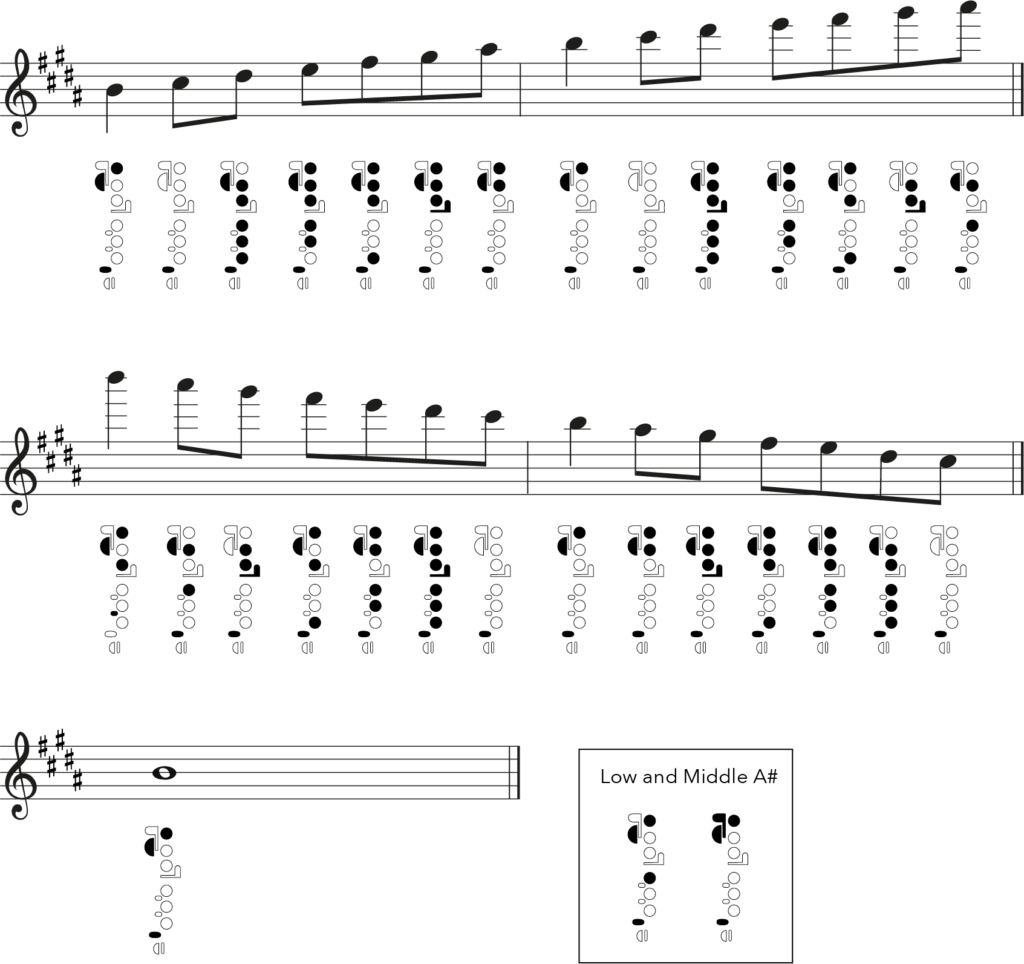
F# Major Scale
- F# G# A# B C# D# E# F#
A mighty six sharps to watch out for! Here are the top 3 challenges when playing F sharp Major:
- Thumb Key Complexity: Navigating the numerous thumb key changes required for the F# major scale’s many sharps challenges finger agility and coordination, especially across octave transitions.
- High C# Execution: Attaining the high C# at the scale’s climax demands precise fingering, robust air support, and meticulous embouchure adjustments to maintain pitch accuracy and sound quality.
- Maintaining Even Tone Across Registers: Achieving a consistent tone throughout the scale, particularly with the scale’s sharp notes and through the break into the higher register, challenges the player’s control over air stream and embouchure stability.
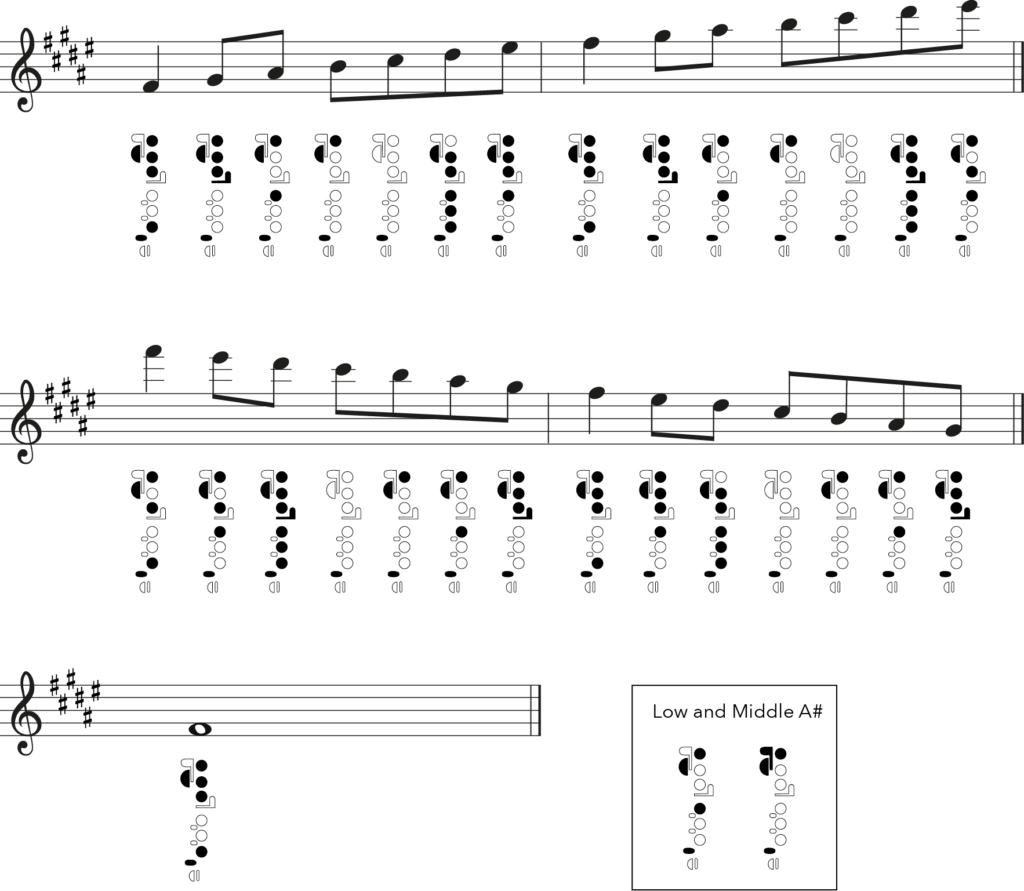
F major scale
- F G A Bb C D E F
One flat (Bb) to watch out for. Here are the top 3 challenges when playing F Major:
- B-flat Fingering: Managing the B-flat fingering smoothly within the scale, especially transitioning from A to B-flat and back, challenges finger coordination and speed.
- High C Execution: Reaching the high C at the scale’s peak requires precise finger movements and embouchure adjustments to maintain pitch accuracy and tone quality.
- Maintaining Even Tone and Intonation: Ensuring consistent tone and intonation across the scale, particularly when moving through the octave break and into the higher register, tests the player’s breath support and embouchure control.
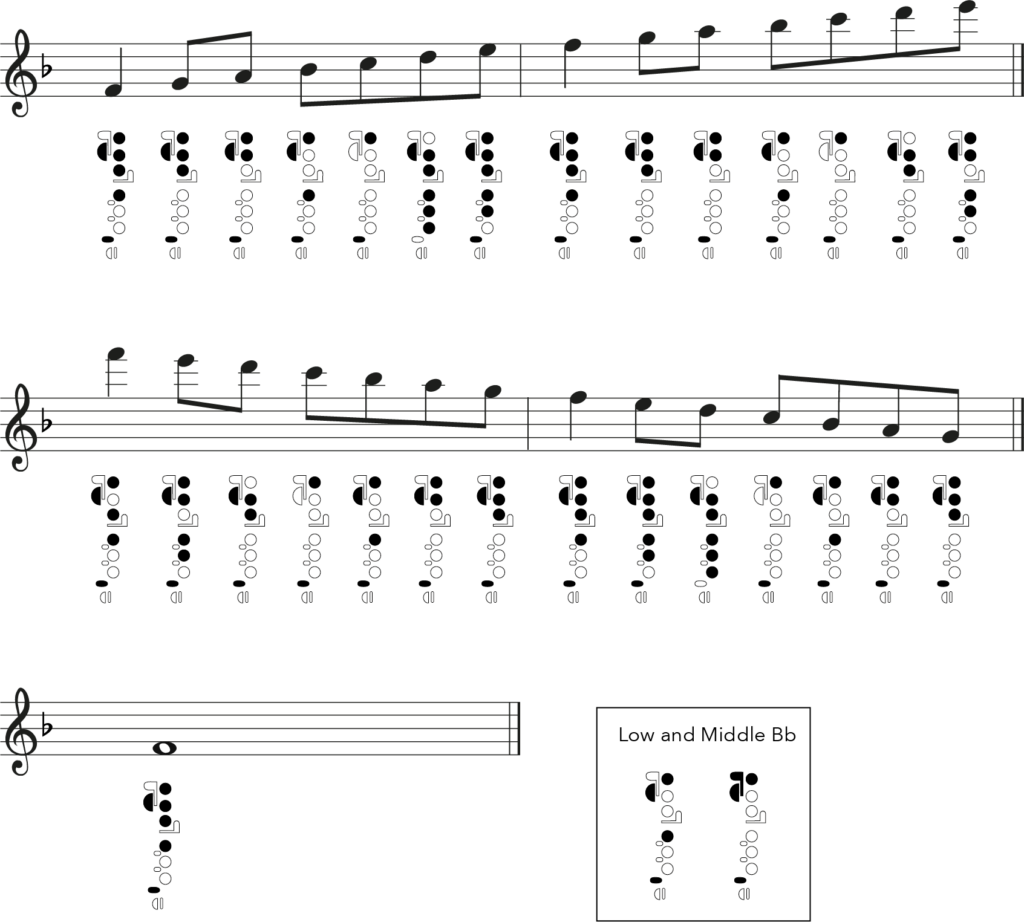
Bb major scale
- Bb C D Eb F G A Bb
Two flats (Bb and Eb) to watch out for. Here are the top 3 challenges when playing B flat Major:
- Thumb Key for B-flat: Utilizing the thumb key for the B-flat note, especially in transitions from A to B-flat and navigating through the scale, requires careful finger coordination.
- High F Execution: Achieving the high F at the scale’s climax demands accurate fingering, controlled air support, and precise embouchure adjustments to ensure tonal quality and pitch stability.
- Consistent Tone Across Registers: Maintaining a consistent tone throughout the scale, with its focus on flat notes and transitioning through the octave break, challenges the player’s embouchure flexibility and air stream management.
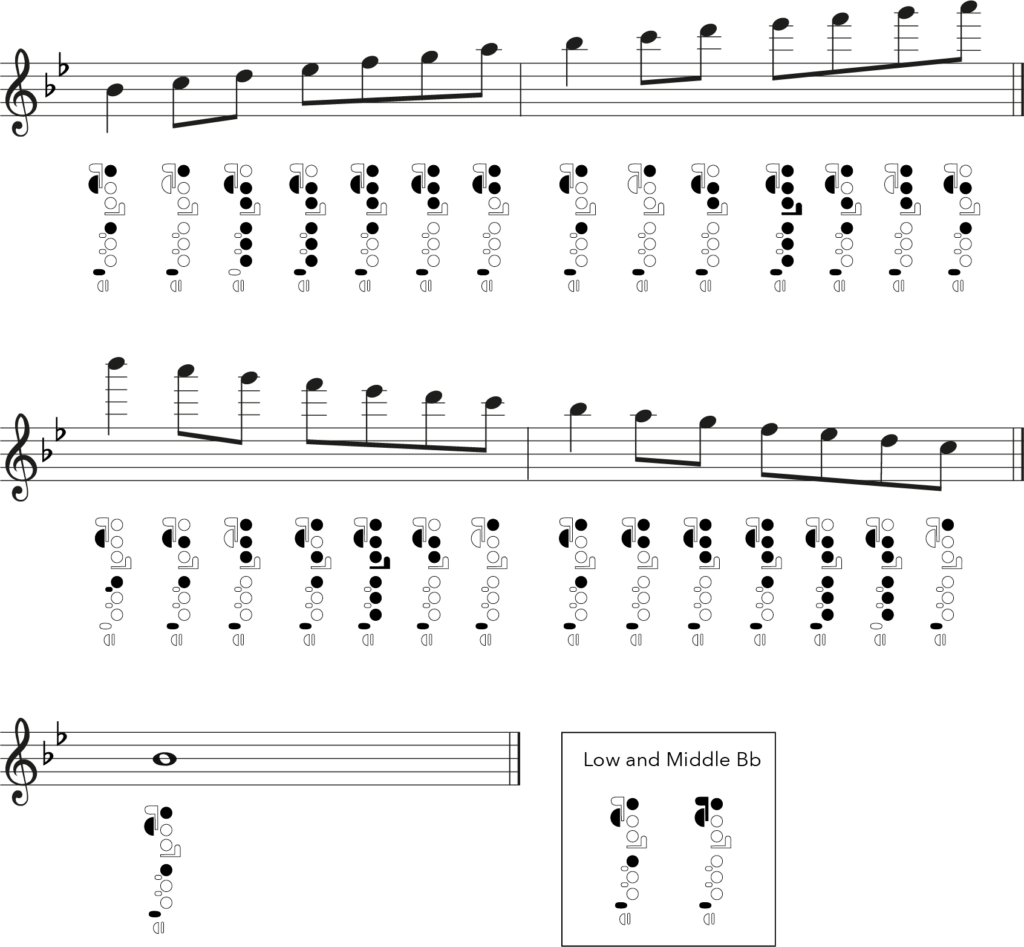
Eb major scale
- Eb F G Ab Bb C D Eb
Three flats to watch out for! Here are the top 3 challenges when playing E flat Major:
- Leveraging the Pinky Keys: Navigating E-flat and A-flat notes efficiently, especially when involving the left-hand pinky for E-flat and the right-hand pinky for A-flat, tests finger dexterity and coordination.
- High G Execution: Attaining the high G at the scale’s peak requires meticulous finger placement, enhanced air support, and tight embouchure control to maintain accurate pitch and sound quality.
- Smooth Transitions Across Octaves: Ensuring smooth transitions between octaves, particularly when moving through notes with flats and managing the octave break, challenges the player’s ability to maintain even tone and consistent intonation.
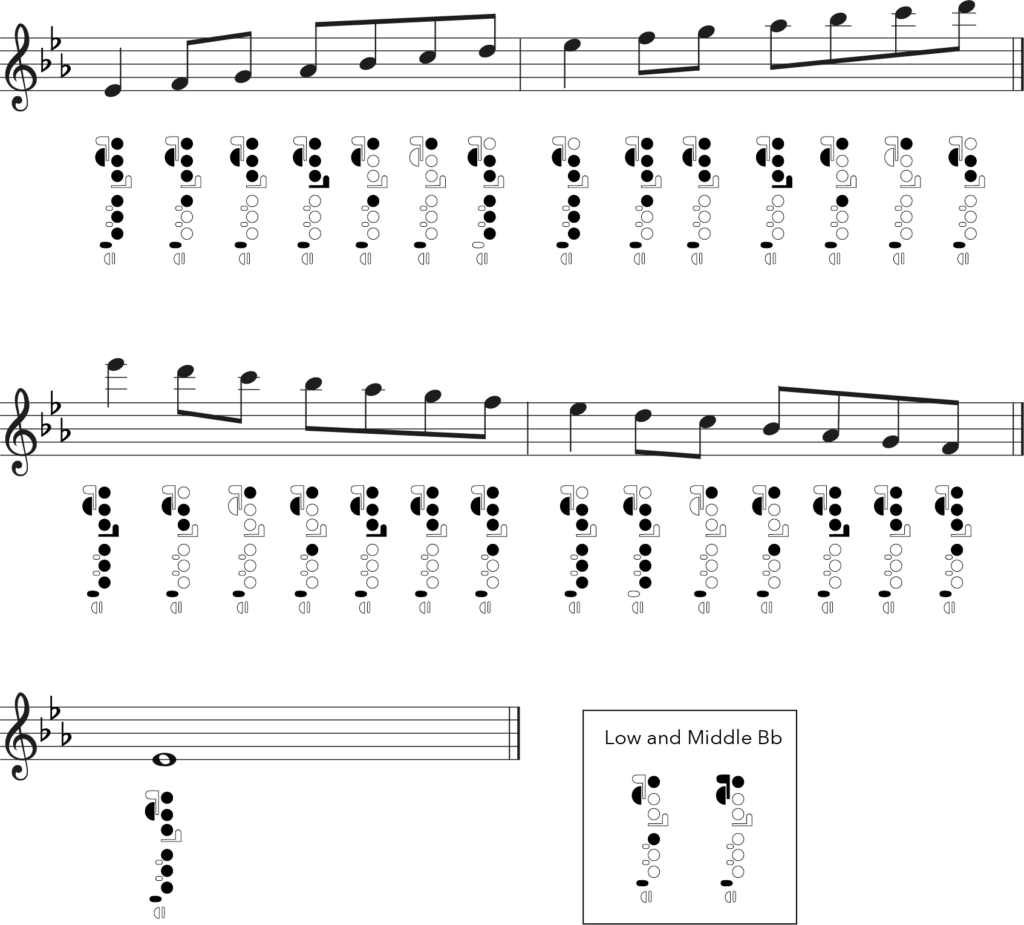
Ab major scale
- Ab Bb C Db Eb F G Ab
Four flats to watch out for in A flat major. Here are the top 3 challenges when playing this scale:
- Thumb Key for A-flat: Managing the thumb key for A-flat, especially during transitions from G to A-flat and navigating through the scale, requires precise finger coordination and agility.
- High E-flat Execution: Reaching the high E-flat at the scale’s climax demands accurate fingering, controlled air support, and refined embouchure adjustments to ensure pitch stability and tonal quality.
- Consistency in Tone and Intonation: Maintaining a consistent tone and intonation throughout the scale, particularly with its emphasis on flat notes and through the octave transitions, tests the player’s breath support and embouchure flexibility.
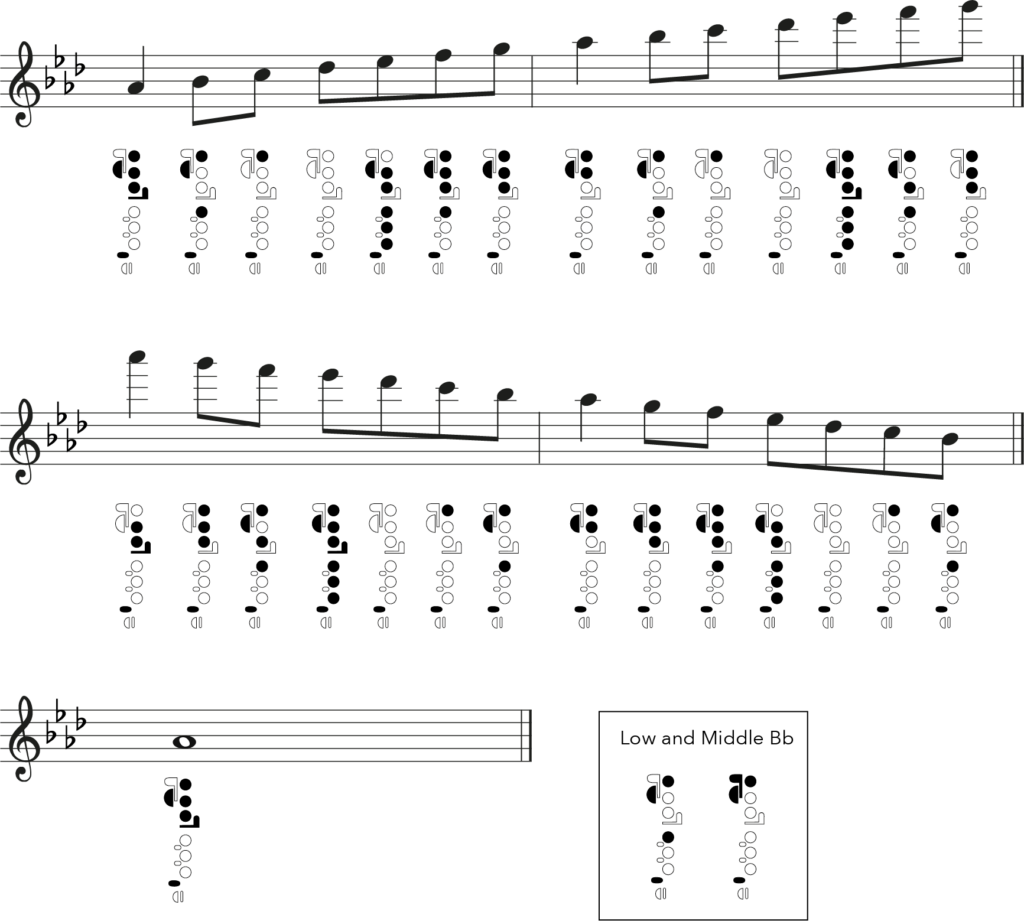
Db major scale
- Db Eb F Gb Ab Bb C Db
Four flats to watch out for in A flat major. Here are the top 3 challenges when playing this scale:
- Extended Use of Pinky Keys: The D-flat major scale requires frequent use of the pinky keys for both hands to manage the C-sharp/D-flat and G-sharp/A-flat notes, challenging finger dexterity and coordination.
- High A-flat Execution: Achieving the high A-flat at the scale’s peak demands precise fingering, robust air support, and meticulous embouchure adjustments to maintain accurate pitch and sound quality.
- Maintaining Even Tone Across Registers: Ensuring consistent tone and intonation across the scale, with its heavy reliance on flats and navigating through the octave break, challenges the player’s control over air stream and embouchure stability.
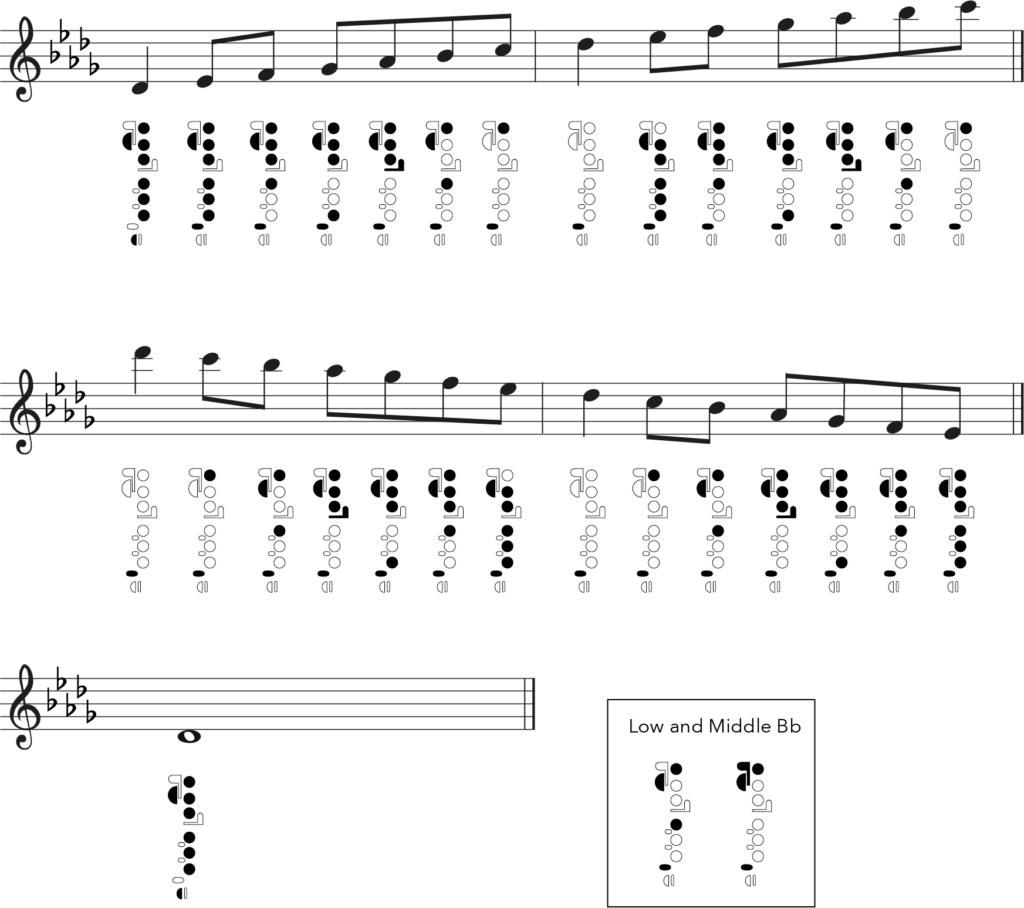
Arpeggios for Flute Major Scales
Each flute major scale also has an arpeggio, and this is essentially like a broken chord. It is made up from the 1st note, the 3rd note and the 5th note of the scale.
Check out arpeggios for flute with our complete guide.
Music theory: Major scales
Need a music theory recap of major scales, check out our complete guide to the major scale.
